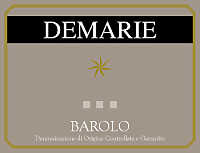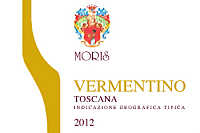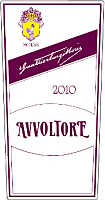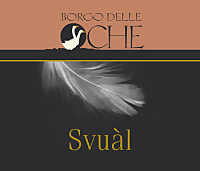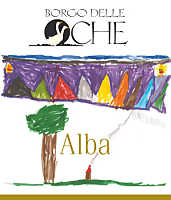|
Acidic substances found in wine are very important in determining its gustatory
profile. Acidity is a fundamental element influencing wine since its
place of origin - grape berries - providing most of the acidic elements
which will be found in wine. The production of the beverage of Bacchus adds
other acidic substances to wine, in particular during fermentation. The
variation of acidity can also happen after the end of fermentation, in
particular as a consequence of a bad keeping of wine. In the right quantity,
acidity represents a fundamental and useful element, not only for reaching a
proper balance, but also for its contribution to the complexity of wine taste.
A gustatory stimulus antagonist of round tastes, in case acidity is not
present in right quantity, it can make the wine have a flat taste and with no
character.
The importance of acidic substances in the production of wine begins from
vineyard. The quantity of acidic elements contributes, for example, to
determine the period of harvesting. The most significant case in which acidity
is a fundamental factor in wine making, is the production of sparkling wines.
In this specific case, the quantity of acidity found in grapes at the moment of
harvesting is in fact more important than sugar, in order to properly support
one of the main characteristics of these wines: crispness. As opposed to table
wines, in which the quantity of sugar is also useful for the production of
ethyl alcohol, in sparkling wines the level of sweetness must be pretty low. It
should however be noticed during the production of sparkling wines - a process
undergoing a second fermentation - will be produced ethyl alcohol as well.
Before understanding the influence of acidity in wine taste, it should be
understood its role and its nature in wine making. According to a technical
point of view, the presence of acidic substances in wine is measured as
fixed acidity, volatile acidity and total acidity, the
latter determined by the sum of the former ones. From a quantitative point of
view, the most important acid in wine is tartaric, also called grape
acid, despite this can also be found in other plants and fruits, in particular
in tamarind. Tartaric acid, besides being the main one found in wine, is also
the substance responsible of the crisp character which is generally perceived
in wine. A fundamental and important acid, the action of tartaric acid is
completed by the presence of other acids.
The acidic substances found in wine do not originate from grape juice only, as
some of them are formed during vinification and aging. In wine are found many
acidic substances and, of them, the most important ones in terms of quantity
are tartaric, malic, citric, succinic, lactic and acetic acids. It should also
be noticed that, during wine making - and according to the law - it is also
permitted the addition or reduction of certain acids in order to improve
stabilization, taste and keeping of wine. Besides tartaric, among the acids
used for correcting a wine and permitted by law, are mentioned ascorbic and
sorbic acid. Of all the acids found in wine, the most fearful one
certainly is acetic acid, which presence can be positive within a
specific limit, beyond that, it causes an unpleasing fault.
|
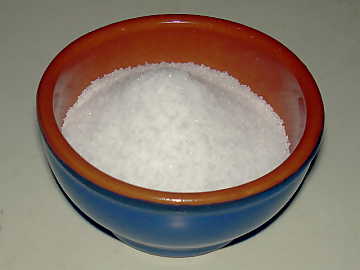 | |
| Crystals of tartaric acid, the main
responsible for wine acidity | |
|
The quantity of these acids changes in the course of wine life, in particular
malic acid - having a sour and unripe taste - which can be easily degraded to
lactic acid, having a rounder taste. This phenomenon, generally called
malolactic fermenation, is better defined as malolactic
conversion, as, according to a chemical point of view, it is not produced by
fermentative processes done by yeast. Malolactic conversion is generally
considered as a positive process in the production of red wines, whereas in
white wines it is usually avoided as this would make the taste too
round. Acidity is in fact one of the typical and characteristic
qualities of white wines, responsible for its lively taste and crispness, in
order to reach a proper balance while avoiding an excessive flatness of taste.
Fixed acidity is determined by the quantity of acidic substances found in a
wine and do not tend to volatilize, that is they do not get dispersed during
the life of a wine, therefore remaining fixed. Volatile acidity
represents the fraction of acidic substances which can be freed from wine and
disperse in the air, all of them belonging to the so called acetic
series - perceivable both to smell and taste - of which, the main one is
acetic acid. With a characteristic sour and sharp taste, acetic acid is however
found in wine, although its contribution is considered positive only in case
the quantity is lower than 0.7%. Beyond this limit, wine is considered
affected by acescence, easily recognized to the nose for the evident
vinegar smell. An excessive quantity of this acid in fact brings to the
development of vinegar, in which acetic acid becomes dominant and
characteristic.
According to an organoleptic point of view, every acidic substance has its own
and characteristic taste, therefore, the taste of tartaric acid is pretty
different from lactic or acetic acid. The fundamental acidic stimulus is not in
fact the only organoleptic quality which can be perceived from any acidic
substance: in its overall profile, every acid has a unique and characteristic
taste going beyond the simple acid flavor. On this regard, it is
interesting to understand the flavor produced by the main acidic substances
typically found in wine. The most important of them all is, like already said,
tartaric acid - also called grape acid - and it is the one mainly contributing
to the acidic flavor of wine and giving it the typical crispness. The
excessive presence of this acid gives the wine a pretty hard character,
also determining a strong unbalance and an excessively sharp personality
of the taste.
Malic acid takes its name because it is found in apples (malum in
Latin), however, it should be noticed, it is also found in other fruits as
well. Its taste is pretty hard and gives a typical unripe
sensation, a quality usually found in white wines, in particular young wines,
however not so appreciated in red ones. For this reason, in red wines, it is
favored the so called malolactic fermentation in order to convert malic
acid into lactic acid done by lactic bacteria. Lactic acid, as opposed to malic
acid, has a rounder and smoother taste, while however having a sour flavor.
This acid naturally develops in milk - which takes its name from the Latin
lac - as a consequence of its acidification. Its formation in white
wines is usually avoided, produced by the malolactic conversion, in order to
keep a certain crispness and vivacity of wine.
Found in far lower quantity than tartaric, in wine is also present citric acid,
capable of giving a pleasing crispness and vivacity recalling the one of citrus
fruits. It should be noticed citric acid can be easily degraded by lactic
bacteria and, therefore, it tends to disappear with the aging of wine. Citric
acid is generally found in young white wines, reinforcing the sensorial action
of tartaric acid, therefore increasing the sensation of acidity and crispness.
Another acid found in wine is succinic acid. This substance is formed as a
consequence of alcoholic fermentation and, it should be said, its presence does
not significantly contribute to the sour taste of wine. The role of succinic
acid is mainly about sapidity of a wine and it can also contribute to reinforce
the vinous character in young wines.
A particular consideration should certainly be done about acetic acid. It is a
substance developing during wine production, since the moments of fermentation.
With a sour and harsh taste, it contributes to the presence in wine of
aromas and tastes directly recalling vinegar. It is the main acid making
volatile acidity and its presence in wine is considered tolerable when it is
lower than 0.7%. Beyond this limit, in wine are perceived evident aromas of
vinegar, a sure sign the wine has been affected by acescence. When present in a
tolerable limit, acetic acid can contribute to wine's crispness and vivacity,
in particular in white wines, as well as contributing to the development of the
aromatic profile. The effect on wine aromas is obtained thanks to the volatile
nature of acetic acid that, by volatilizing from the surface of the wine,
transports upwards the aromas as well.
The impact of acidity on wine taste gets different meanings according to style,
in any case, it is a fundamental element for the determination of balance. From
a sensorial point of view, acidity is classified in the family of hard
substances, the ones playing an opposite role against round substances having a
basically sweet taste. Acidity also works a reinforcing action for the other
“hard” sensations - astringency and sapidity - reinforcing their organoleptic
effect. Also effervescence is reinforced by acidity, an effect being mutually
true. Acidity should be considered as the main antagonist of sweetness, having
in this sensation a mutual balancing effect. On this regard, it should be
considered the taste of lemon juice that, besides being acidic, it is sour as
well, a sensation which can be easily made more tolerable with the simple
addition of sugar. In this specific case, the quantity of acidic substances is
not altered at all, however their perception becomes less aggressive and even
agreeable.
Temperature plays a pretty neutral role on the perception of acidity: the
gustatory sensation will be perceivable no matter the temperature, however it
should be noticed low temperatures make acidity more agreeable and pleasing.
From a sensorial point of view, the presence and intensity of an acidic
substance causes a well evident physiological response: salivation. Acidity is
considered as a potential harmful condition for oral cavity's mucosa, therefore
the natural physiological response is determined by salivation, having the
purpose of diluting acidic substances while making them less aggressive. The
higher the secretion of saliva, the higher the intensity of acidity, while
noticing - on this regard - the opposite action caused by astringency on
salivation. Tannins responsible for the sensation of astringency in fact bond
to the proteins of saliva, causing their precipitation and the consequent
reduction of the secretion.
|


